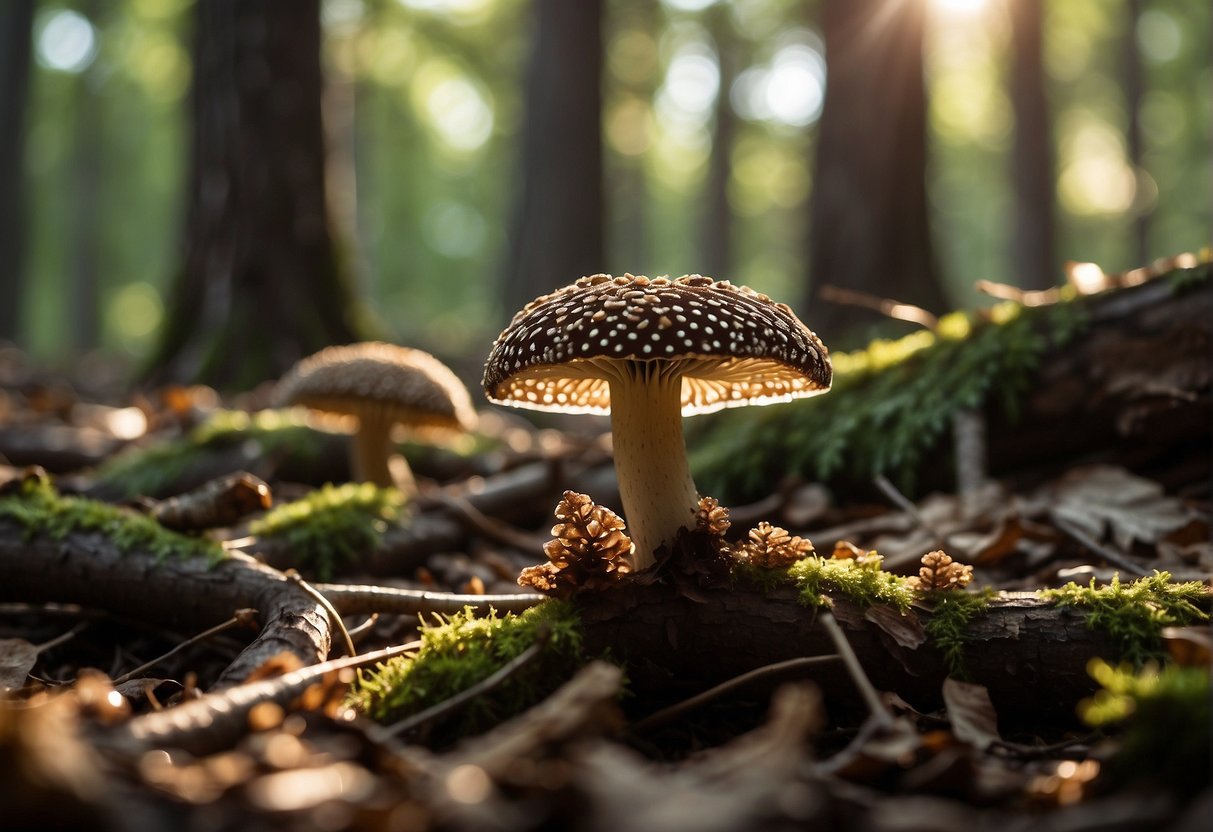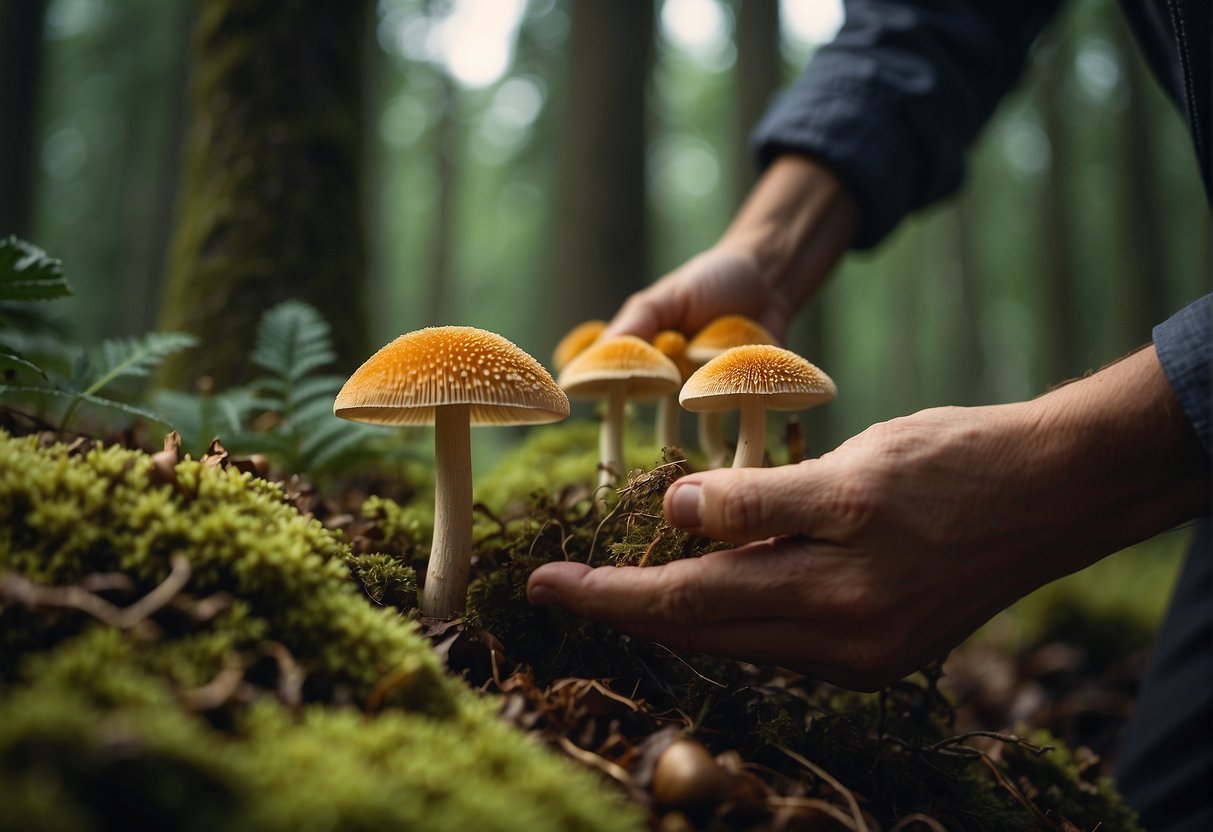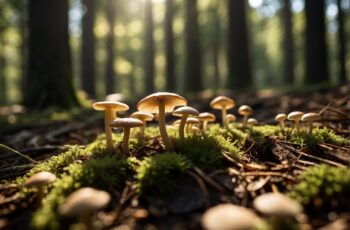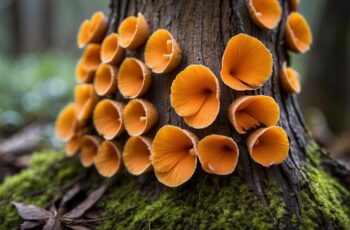Embarking on a morel mushroom hunting adventure is one of the most rewarding experiences an outdoor enthusiast can have in the spring. These elusive fungi are not only a culinary delight but also a symbol of nature’s hidden treasures. Morel mushrooms are known for their distinctive honeycomb appearance and can mostly be found in wooded areas across North America. They have a short season, with the exact timing depending on the local climate and conditions. Searching for these prized mushrooms takes patience and a keen eye, as they’re often camouflaged against the forest floor.

Understanding the habitat of morel mushrooms is crucial for a successful hunt. Picking up on the subtle clues that nature offers will guide you to areas where morels are likely to grow. They often appear in association with certain types of trees, such as elms, ashes, and poplars, especially if these trees are dying or dead. Morels also thrive in areas that have been disturbed, such as burn sites. While getting ready for the hunt, equip yourself with the necessary tools—a mesh bag to carry the mushrooms, which also allows their spores to spread, and a sturdy walking stick can help navigate through rough terrain.
Key Takeaways
- Morel mushroom hunting offers a blend of outdoor adventure and culinary reward.
- Recognizing morel habitats is key to successful foraging.
- Proper preparation and ethical foraging practices enhance the hunting experience.
Understanding Morel Mushrooms and Their Habitat
Discovering the elusive morel mushroom is a springtime quest for many avid foragers. Understanding the unique characteristics of morels and their preferred habitats is key to a successful hunt.
Species and Characteristics
Morels (Morchella spp.) are distinctive wild mushrooms known for their honeycomb appearance, with pits and ridges on their caps. Morels vary in size, ranging from two inches to over a foot in height, and display a range of colors from tan to dark brown. The life cycle of a morel mushroom begins when spores germinate in the soil and form an underground network of cells called mycelium. This fungus is a part of a complex system within nature, living in symbiosis with certain trees such as ash, elm, cottonwoods, poplars, and sycamore.
Morel mushrooms are highly sought after for their rich, nutty flavor and are considered one of the most delicious edible mushrooms. Each morel species thrives in a specific environment, but they all share a preference for moisture and well-draining soils like loamy, sandy, or clay-based permeable soils.
Prime Locations for Growth
When you’re on the lookout for morels, focus on areas that meet their growth conditions. Soil temperature is a critical factor; morels typically emerge when the soil warms to around 45-55 degrees Fahrenheit in the spring. Moisture levels are equally crucial, and the appearance of morels often follows a period of spring rains.
Seek out south-facing slopes in the woods, as these areas receive more sunlight and warm up sooner. Tree identification is invaluable, as morels frequently grow in association with specific trees, particularly in forest floor areas with ash, elm, and sycamore. Additionally, river bottoms and flood plains can create fertile grounds for morels due to the combination of moisture and nutrient-rich sediments.
Burn sites are another prime location for morel growth. After an area has experienced a fire, the following spring may yield an abundant morel crop, as these mushrooms thrive in the nutrient-rich conditions of burn areas. Whether it’s a recent burn site or in the woods, proper identification and ethical harvesting practices are essential to ensuring the continued availability of these treasured mushrooms.
Preparing for the Hunt
Embarking on morel mushroom hunting is both thrilling and rewarding, provided you’re well-informed and prepared. Understanding when to set out and what tools to bring along ensures a successful and safe experience in the great outdoors.
Optimal Season and Conditions
Morel Season: You’ll find the best success in early spring, as morel mushrooms thrive in post-winter conditions. Target times just after the snowmelt when the forest floor begins to warm.
- Temperature: Actively start looking when soil temperatures near 50-55 degrees Fahrenheit.
- Moisture: Morels favor moist soil, often flourishing after rainfall or in areas that have experienced previous wildfires, which can lead to a bounty of mushrooms in the subsequent year.
- Sun Exposure: Pay attention to the south side of hills and slopes, where the sun hastens the warming of the soil.
Tools and Safety
Before you head out, gear up with some essential tools and prioritize your safety:
- Maps: Use Google Maps, ONX, or a local sightings map to scout potential spots.
- Knife: Carry a sharp blade to cut morels above ground level, protecting the mushroom’s root system for future growth.
- Basket or Mesh Bag: These allow spores to disperse as you continue hunting, potentially seeding new growth areas.
Safety must always come first:
- Always tell someone your planned route and expected return time.
- Dress appropriately for the season and terrain, and consider bright colors to be easily spotted.
- Pack a first aid kit and familiarize yourself with basic wilderness survival skills.
With these preparations, you’ll be well on your way to a successful morel mushroom hunt. Keep your eyes peeled for the telltale conical shape of morels camouflaged amongst the leaf litter, and enjoy the connection to nature that mushroom hunting uniquely provides.
Morel Hunting Techniques
In the pursuit of morels, your success hinges on precise techniques ranging from where to search to how to identify and gather these elusive fungi effectively.
Effective Search Strategies
Soil and Environment: Morels have a particular penchant for certain soil conditions. They thrive in moist, well-draining soil commonly found in burn areas and forested mountains. After a forest fire, nutrients released into the soil create an ideal environment for morels to flourish. During the springtime, as the soil warms to approximately 45 to 60 degrees, morels begin to fruit. Utilize this knowledge and check a morel mushroom map for recent burn areas, and concentrate your search there.
- Public vs. Private Land: Always ascertain whether you’re foraging on public or private land. Public lands often allow for mushroom hunting, but knowing the local laws and regulations is imperative.
- Hunting Tips and Timing: Morels can be quite abundant in the south as early as March due to warmer temperatures. On your hunt, pay attention to disturbed ground and areas around the roots of trees. Morels often associate with certain hardwoods such as elms, ashes, and aspen. Early morning or late afternoon hours can be particularly productive, as this is when the forest floor is shaded and morels are easier to spot.
Identifying and Harvesting
Tree Identification: Familiarizing yourself with tree species that morels commonly associate with is a critical skill. Look for dying or deceased elms, ash, apple, and sycamore trees; morels are often found in the vicinity. For more detailed information, review tips on morel mushroom hunting and foraging.
- Harvesting Technique: When you spot a morel, cut or gently twist the mushroom at ground level, careful not to disturb the mycelium below. This ensures the continued growth of morels year after year.
- Carrying Your Bounty: Consider using a mesh bag to collect your mushrooms. This not only carries your finds but allows the spores to disperse and promote future growth of morels across the hunting grounds.
With the right strategies and respect for the surroundings, your foraging trips can lead to rewarding morel mushroom finds. Happy hunting!
Legal and Ethical Considerations

When you head out into the woods in pursuit of the elusive morel, it’s crucial to be aware of not just where you’re stepping, but also whose land you’re on and the impact you’re leaving behind. The successful morel hunter respects both legal boundaries and sustainability practices.
Navigating Land Ownership
In the United States, foraging morels on private lands without permission is a legal faux pas. You’re better off sticking to public lands, where regulations are usually more forager-friendly. However, each state, from Michigan to the broader regions of New England and the Midwest, may have its own rules on foraging. For instance, certain areas in the Upper Midwest require permits even on public lands.
Before going out, use tools like Google Maps to research and respect property lines:
- Confirm Accessibility: Land ownership maps and apps can clarify where you’re free to roam.
- Ask For Permission: When morel hunting on private property, obtaining explicit consent from the landowner is a sign of respect and legality.
Sustainability Practices
Morel mushrooms are a sustainable treasure if harvested responsibly. Whether you are a seasoned morel hunter or a novice, your actions can have a lasting impact on their populations. By following a few simple rules, you can help ensure that these fungi thrive for years to come.
- Leave Some Behind: Harvest selectively to allow some morels to release spores and regenerate.
- Gentle Harvesting: Cut or twist the morels above ground level without disturbing the mycelium beneath.
- Spread Spores: Consider carrying your harvest in a mesh bag to naturally distribute spores throughout your walk.
Always remember, by staying informed and respectful, you play a part in preserving the morel hunting tradition.


